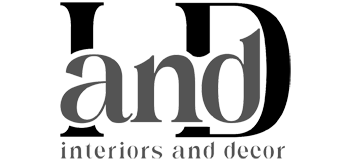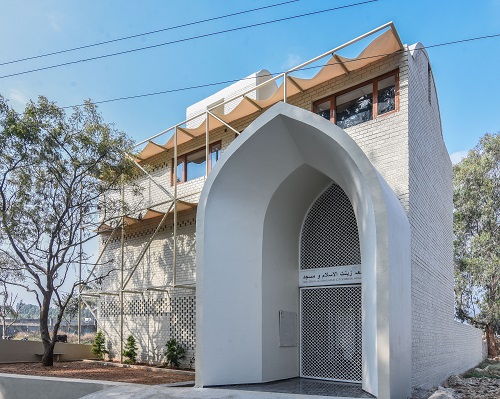Authored Article by:- Ar. Mueen Haris
Facades of buildings play a crucial role in the overall aesthetics and functionality of a structure. In today’s society, where appearances matter, a building’s facade can make a powerful statement. They serve as the face of a building, representing its identity and creating a lasting impression on the viewers. Over time, the evolution of facades has been influenced by various factors, including architectural trends, technological advancements, and environmental considerations. In recent years, sustainability has become a key driver in facade design. Architects are now incorporating innovative strategies, such as green walls and photovoltaic panels, to create energy-efficient and environmentally-friendly facades. Here we will discuss about the various trending facade materials:-
- Glass:-Glass facades have been popular for many years due to their ability to create a sleek and modern look. However, recent advancements in glass technology have taken this material to new heights. From energy-efficient glazing systems to smart glass that can adjust its transparency based on external conditions, glass facades are becoming more versatile and sustainable.
- Bio-based facade materials:- Bio-based facade materials are becoming increasingly popular in the construction industry due to their sustainable and eco-friendly nature. These materials are derived from renewable sources such as plants, trees, and agricultural waste, making them a viable alternative to traditional facade materials that are typically made from non-renewable resources like concrete and steel.
One of the most common bio-based facade materials is wood. Wood has been used for centuries in construction and continues to be a popular choice due to its natural beauty, durability, and versatility. It can be used in various forms, including solid wood panels, wood cladding, and engineered wood products like plywood and laminated veneer lumber.
Another bio-based material gaining traction in facade design is bamboo. Bamboo is a fast-growing grass that can be harvested in just a few years, making it a highly renewable resource. It is known for its strength, flexibility, and aesthetic appeal. Bamboo can be used as a cladding material, flooring, or even as a structural element in the form of bamboo beams.

- Brick Veneer:- Brick veneer is a popular choice for contemporary homes, offering a timeless and classic look. It is a thin layer of brick that is attached to the exterior wall, providing the appearance of a solid brick structure. Brick veneer offers durability, low maintenance, and excellent thermal insulation, making it a practical choice for homeowners who desire a traditional yet contemporary facade.
- Stucco:- Stucco is a popular choice for affordable facades due to its low cost and versatility. It is a mixture of cement, sand, and water that can be applied to various surfaces, including wood, brick, or concrete. Stucco provides a smooth and seamless finish, and it can be painted in different colors to achieve the desired look.
- Metal:- Metal is a versatile and popular material used in building facades due to its numerous benefits. From its durability and strength to its aesthetic appeal, metal offers a wide range of options for architects and builders. Aluminum composite panels, for example, are lightweight, durable, and can be customized to achieve various design aesthetics
- Wood:-Wood facades add warmth, natural beauty, and a sense of craftsmanship to a building’s exterior. They can be used to create both traditional and contemporary designs. Wood facades require regular maintenance, such as sealing and painting, to protect against weathering and decay. However, advancements in wood treatment technology have improved its durability and resistance to rot and pests.
- Fiber Cement:-Fiber cement is an innovative material that combines the strength and durability of cement with the flexibility of wood fibers. It is becoming increasingly popular for its ability to mimic the look of traditional materials like wood or stone, while also being fire-resistant and low-maintenance. Fiber cement panels are available in a range of colors and textures, making them a versatile choice for facade applications.
- Engineered Wood:- Engineered wood, also known as composite wood, is gaining traction as a sustainable and cost-effective alternative to natural wood. It is made by combining wood fibers, resins, and adhesives to create a material that is more stable and resistant to moisture and pests. Engineered wood facades can replicate the appearance of natural wood while offering greater durability and longevity.
- Photovoltaic Panels:-With the increasing focus on renewable energy, photovoltaic (PV) panels are being integrated into building facades to generate electricity. These panels are designed to capture sunlight and convert it into usable energy, making buildings more self-sufficient and environmentally friendly. PV panels can be seamlessly integrated into different facade materials such as glass or metal, allowing architects to combine aesthetics with sustainability.
Thus, the world of facade materials is rapidly evolving, driven by the need for sustainable and aesthetically pleasing solutions. Glass, metal, fibre cement, engineered wood, and photovoltaic panels are just a few examples of the trending materials that are being used to create innovative and visually striking facades. As society continues to prioritise sustainability and design excellence, trending and sustainable facades will play an even more vital role in shaping the future of architecture and design.


